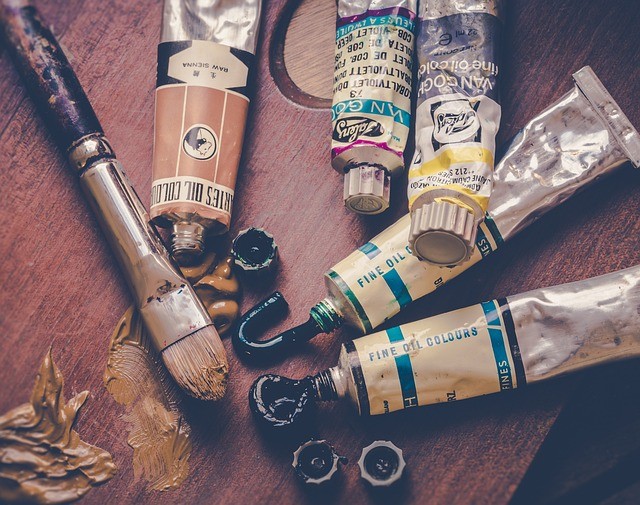Making acrylic pins is an excellent way to express your creativity and personal style. They’re easy to craft in various shapes, so there’s no limit to what shapes you can create!
The initial step in creating custom pins is deciding on the material and design you wish them to be made from. This will determine how much material and design you should order.
What materials do I need?
Crafting custom pins is an excellent way to design unique, personalized accessories. It’s also a great hobby for learning new skills and having fun experimenting with different designs.
Before beginning to create custom pins, it is first necessary to determine what type of design you would like. Two main options are soft enamel and hard enamel.
The difference between soft enamel pins and hard enamel pins is that soft enamel pins receive their base or outline color before enameling, giving you the freedom to experiment with textures and depth in your designs. Kessler Baking Studio used recessed enamel paint on their mustard yellow pin for an interesting effect.
Utilizing raised or recessed areas in your design will help prevent enamel paint from seeping into unintended places on your artwork. Keep in mind that custom soft enamel pins have one raised and one recessed layer, so be sure there are enough closed-off recessed sections to contain the color you are adding.
Furthermore, soft enamel pins only support solid colors, so it is best to avoid gradients or transparent hues in your design. However, photodome printed pins can be used instead if shading is required in your artwork.
When searching for the ideal manufacturer to create your enamel pins, be sure to select a reliable company who can assist in creating an excellent product and offering excellent customer service. They should also send you either a proof or sample pin so that you are certain your final order will meet all of your specifications.
Once you’ve identified the ideal manufacturer, it’s time to place your first order! Start small – perhaps with a few hundred pins – and gauge how well your design sells before increasing order size. After validating demand has been established, consider how best to sell your pins online.
How to prepare the paper?
Making custom pins and acrylic stand is a fun and creative way to add some personal flair to your belongings and accessories. Plus, it’s an easy craft you can do at home; all you need are some basic materials and tools.
To create these unique pins, the first step is prepping the paper. Select a material that’s thick enough to cut shapes without ripping or tearing, such as cardstock. Afterwards, find an image that will look good printed on the back of the material.

Finding the ideal paper for this task is easy if you look around at your local craft store or online. Many places carry cardstock in various colors and thicknesses, ensuring that there’s something perfect for your project.
Additionally, you’ll need a permanent marker the same color as the paper you use to trace your design onto. This will guarantee that it looks accurate when baked.
Another useful trick is to trace your outline on the back of paper with a two-prong utility tip. This ensures straight edges and allows you to cut out your design quickly and precisely.
Now that your paper is prepared, it’s time to get started on your project. To make your acrylic pins truly stand out, pick a design that will catch the eye and be memorable. A straightforward shape is best but you can add some visual interest with custom designed pin backs in vibrant colors.
How to cut the paper?
Making custom acrylic pins is an enjoyable and rewarding craft that anyone can do with the right materials and some creativity. Not only do they showcase your personality, but they make perfect gifts for someone special as well.
Begin by selecting a paper of the correct weight for your project. Cardstock works well as it’s thick enough to cut shapes without tearing but thin enough to handle glue well.
Next, use a pair of sharp scissors to carefully cut out your design. You may also prefer using a craft knife or X-acto for quicker results.
You should probably apply some binder’s glue on your cut edges to make sure they are secure and will withstand being handled by the wearer. Additionally, it’s wise to do a trial run beforehand to make sure all necessary pieces are present.
Making acrylic pins yourself not only saves you money on store costs, but it allows for custom colors and designs that make each pin one-of-a kind. Plus, they will look amazing in your home!
Crafting pins requires selecting the appropriate material. Durability is key, so opt for something that won’t break down easily. Furthermore, waterproof and moisture-resistant materials are preferred; this will make them last longer and look better over time. Cardstock is often the go-to option; but other backing materials like craft foam, adhesive-backed vinyl or double-sided tape may also be suitable.
How to glue the paper to the acrylic?
Acrylic plastic is often used for craft projects due to its durability and ease of workability. It comes in an assortment of shapes, colors, and sizes.
When glueing acrylic, it is essential to use the correct materials and techniques for optimal results. Furthermore, make sure your workspace has adequate ventilation; this will guarantee free from dust and debris buildup.
Before beginning to glue together acrylic pieces, ensure they are free from imperfections such as bumps or cuts. Imperfections can interfere with the bonding process and lead to failure.

Once the acrylic pieces are dry, glue them together using a solvent-based adhesive. These glues usually come in squeeze-bottle applicators with needle tips.
Apply the adhesive to one piece of acrylic and lightly press it onto the surface. This will soften the acrylic and draw together the two pieces. Once fully adhered, hold them together for several minutes to allow cure time.
If the acrylic piece you are adhering to is thicker than your paper, place a board underneath for support. Doing this will prevent the paper from sinking into the acrylic and creating wrinkles.
Finally, when adhering the paper to acrylic, it’s essential that it be placed flat and not rolled or folded. Otherwise, removing the dried paper may prove challenging, leaving behind a mark on your acrylic.
You could also try a water-based adhesive like Acrifix for most acrylic projects. While it isn’t as strong as solvent-based glues, it will create an excellent bond and is water resistant – helping protect the acrylic from damage.
How to paint the paper?
Crafting custom acrylic pins is a great way to express yourself and show off your individual style. You can make the pin as straightforward or intricate as desired – from an image printed on cardstock to intricate designs composed of multiple layers of paper.
Crafting custom acrylic pins starts with selecting a design you want for your pin. Trace it onto thin cardstock using a pencil, then trace it onto thin cardstock with scissors or an X-acto knife. If creating multiple layers, be sure to use strong adhesive glue on the back and finish by sealing with Mod Podge to protect it from scratches.
Once your paper is in place, paint the design using watered-down acrylic paints and a small round brush. Keep the layers thin and light – thicker ones may bunch up when shrink paper bakes, making it harder for your designs to fit onto pins.
Once your designs are dry, apply a coat of gloss varnish to the surface of your pin for an extra glossy finish. After it has cured, attach the pin backs and enjoy your new custom pin!
Finally, doming can further increase your pins’ durability. This process works on all shapes, though it may not be as successful with smaller areas like X-wing tips where resin doesn’t reach as far; thus, these areas tend to be brittler than other shapes due to limited reach of resin. Nonetheless, doming still serves as an excellent way to bolster custom acrylic pins!


















